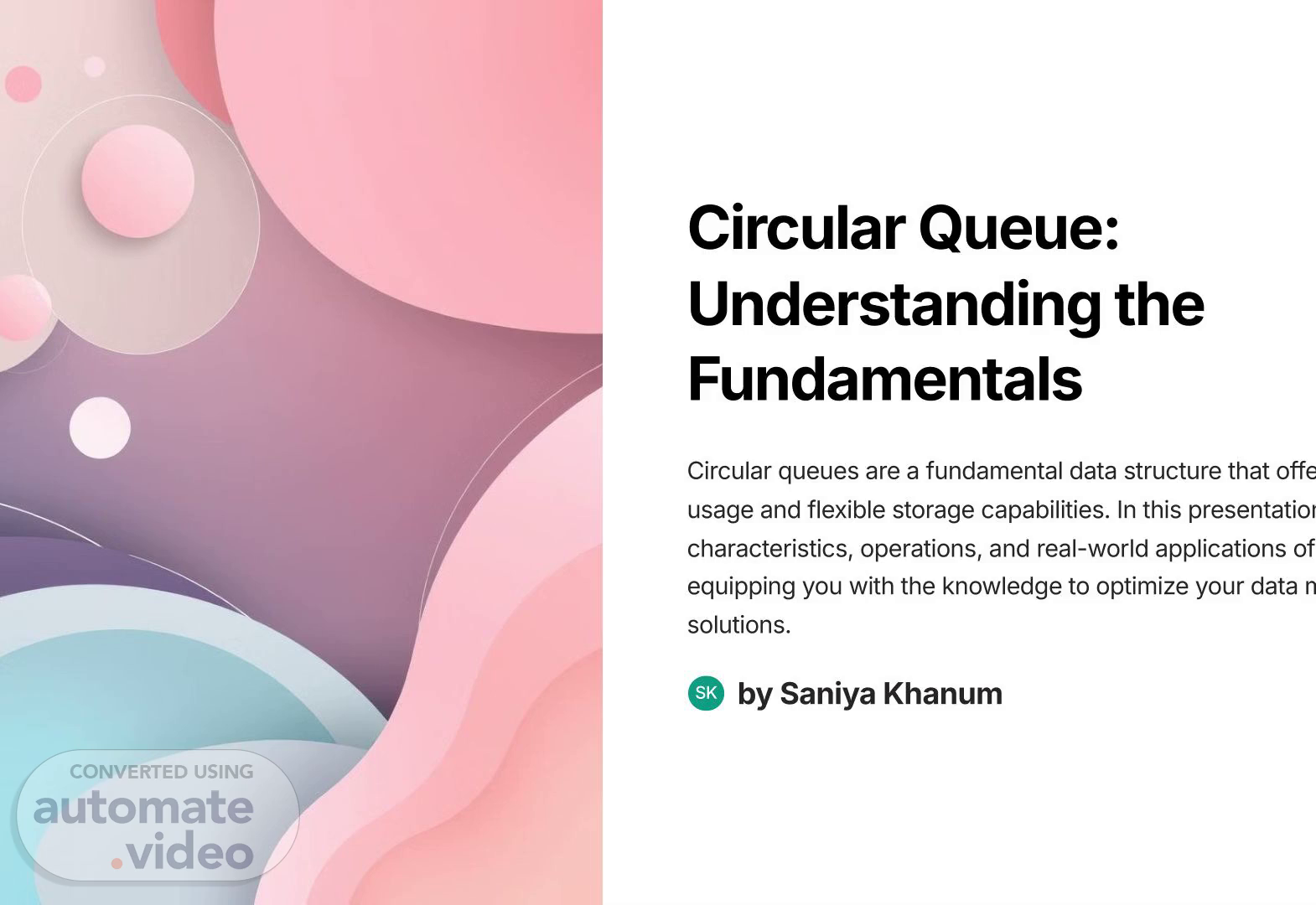Scene 1 (0s)
Circular Queue: Understanding the Fundamentals Circular queues are a fundamental data structure that offer efficient memory usage and flexible storage capabilities. In this presentation, we'll explore the characteristics, operations, and real-world applications of circular queues, equipping you with the knowledge to optimize your data management solutions. by Saniya Khanum SK.
Scene 2 (15s)
What is a Circular Queue? 1 Circular Buffer A circular queue is a linear data structure that uses a fixed-size buffer to store elements. It operates in a circular manner , with the last position connecting back to the first. 2 Efficient Storage Circular queues can achieve efficient memory usage by reusing the space occupied by dequeued elements, making them ideal for applications with limited memory resources..
Scene 3 (31s)
Characteristics of a Circular Queue Fixed-Size Buffer The circular queue is implemented using a fixed-size array, which limits the maximum number of elements it can hold. Wrap-Around Behavior When the rear pointer reaches the end of the array, it wraps around to the beginning, creating a circular structure. Front and Rear Pointers The front and rear pointers track the start and end of the queue, respectively, allowing for efficient enqueue and dequeue operations. Overflow and Underflow Careful management of the front and rear pointers is required to avoid overflow (adding to a full queue) and underflow (removing from an empty queue)..
Scene 4 (56s)
Circular Queue Operations Enqueue Adding an element to the rear of the queue, with the rear pointer advancing to the next position. Dequeue Removing an element from the front of the queue, with the front pointer advancing to the next position. Front Retrieving the element at the front of the queue without removing it. Rear Retrieving the element at the rear of the queue without removing it..
Scene 5 (1m 13s)
Implementing a Circular Queue 1 Initialize Create a fixed-size array and initialize the front and rear pointers to -1, indicating an empty queue. 2 Enqueue Advance the rear pointer , wrap around if necessary, and insert the new element. 3 Dequeue Retrieve the element at the front pointer , advance the front pointer , and wrap around if necessary..
Scene 6 (1m 29s)
Advantages of Circular Queues Efficient Memory Usage Circular queues can reuse the space occupied by dequeued elements, leading to more efficient memory utilization. Flexible Storage Circular queues can handle a variable number of elements within the fixed-size buffer , making them suitable for applications with dynamic storage requirements..
Scene 7 (1m 43s)
Disadvantages of Circular Queues Limited Capacity The fixed-size buffer of a circular queue limits the maximum number of elements it can hold, which may not be suitable for applications with unpredictable or growing storage needs. Complexity Implementing and managing the circular queue's front and rear pointers can add complexity to the data structure, especially when handling overflow and underflow situations..
Scene 8 (1m 58s)
Real-world Applications of Circular Queues CPU Scheduling Circular queues are used to manage the queue of processes waiting for CPU time in operating systems. Network Buffer Management Circular queues are employed to efficiently manage network buffers, ensuring data is processed in the correct order . Multimedia Streaming Circular queues are utilized in multimedia streaming applications to handle the continuous flow of data and maintain a smooth playback experience..
